Flamenco In Spain
Flamenco In Spain
Learn About Flamenco in Spain
Embark on a journey to discover the vibrant world of Flamenco in Spain, a rich tapestry woven with history, dance, and the soulful Flamenco guitar. Let’s delve into the essence of this captivating art form.
Flamenco music has a deep-rooted history that traces back through the sands of time. Originating in Spain, this expressive genre has evolved over the years, reflecting the diverse cultural influences that have shaped it. Its roots are firmly planted in the heart of Andalusia, where the passionate rhythm of Flamenco took its first steps.
Now, let’s talk about dance – an integral part of Flamenco. Flamenco dance, also known as “Baile,” is a mesmerizing display of emotion and skill. The dancers, with their intricate footwork and graceful movements, breathe life into the music. It’s not just a dance; it’s a conversation between the dancer and the music, a story told through every step.
And then there’s the Flamenco guitar, a soulful companion in this musical journey. The Flamenco guitar has a distinct sound, echoing the deep emotions embedded in Flamenco music. As you explore Flamenco, take time to appreciate the intricate melodies and passionate strumming that define this unique instrument.
To truly immerse yourself in Flamenco, consider learning from experienced instructors. Their guidance can unlock the secrets of Flamenco, helping you grasp the nuances of its rhythm and expression. Feel the music, let your body move to the beat, and allow the Flamenco guitar to speak to your soul.
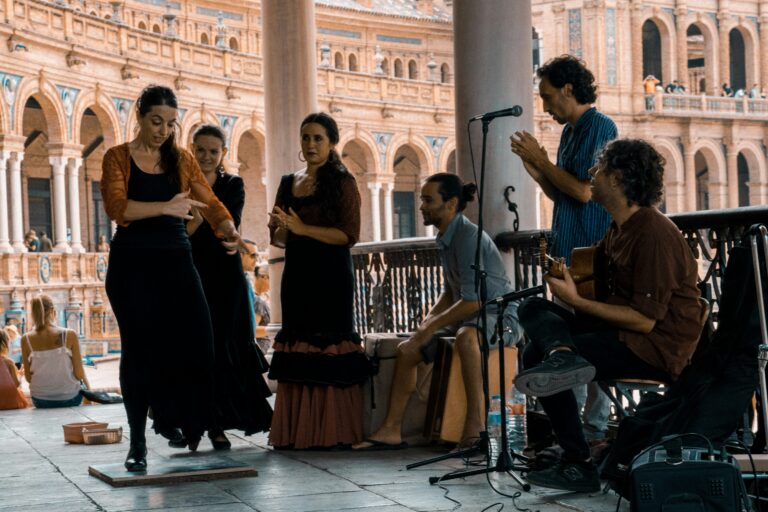
The Essence of Flamenco in Spain
Let’s dive into the heart of Flamenco, uncovering its true essence. Flamenco is more than just music; it’s a vibrant expression of emotions and culture that originated in Spain.
Imagine a journey back in time, where the roots of Flamenco run deep. Born in the passionate region of Andalusia, Flamenco reflects the diverse history and influences that shaped its soulful sound. Its essence lies in the fusion of various cultures, creating a unique blend that resonates with feelings of joy, sorrow, and everything in between.
Now, picture yourself at a Flamenco performance. The music, known as “Cante,” flows with raw emotions, telling stories of love, pain, and life’s complexities. The rhythmic claps, foot stomps, and heartfelt singing create a powerful connection between the performers and the audience.
Flamenco is more than a musical genre; it’s a language of its own. The dance, or “Baile,” is a captivating display of emotions through movement. Dancers convey their feelings with every step, creating a dialogue with the music that captivates the senses.
What Is Flamenco?

Flamenco is a vibrant and expressive form of music and dance that comes from Spain. It’s not just music; it’s a way of telling stories and expressing emotions through sound and movement.
Flamenco is more than just entertainment; it’s a cultural language. It originated in the southern region of Andalusia, and its roots are deeply connected to the rich history of Spain. The music and dance have evolved over time, incorporating influences from various cultures to create a distinctive and captivating art form.
Where Did Flamenco in Spain Originate?
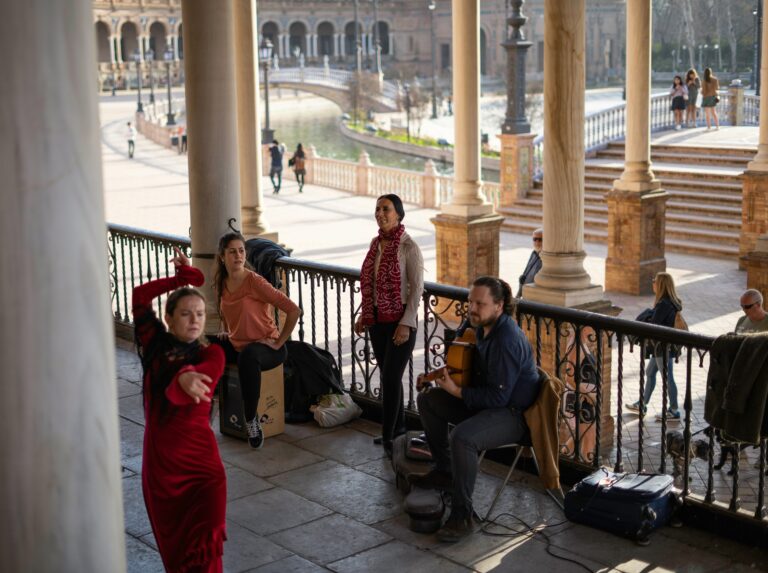
Flamenco, the lively music and dance we enjoy today, originated in Spain, specifically in the region of Andalusia. Imagine going back in time to the southern part of Spain, where the roots of Flamenco began to grow.
In Andalusia, the unique blend of cultures including Gypsy, Moorish, and Jewish influences played a crucial role in shaping Flamenco’s distinctive style. The rich history and diverse traditions of this region provided the fertile ground for the birth of Flamenco.
As you explore the origins of Flamenco, consider delving into the cultural history of Andalusia. Understanding the environment and the people who contributed to its creation adds depth to your appreciation of this expressive art form.
Take a moment to envision the small villages and vibrant cities of Andalusia, where Flamenco first emerged as a heartfelt expression of emotions and stories. By connecting with the roots of Flamenco, you’ll gain a deeper understanding of its cultural significance and the passion that fuels its captivating melodies and rhythmic dances.
Flamenco in Spain: Cante, Baile, and Duende
What Is Flamenco Cante?
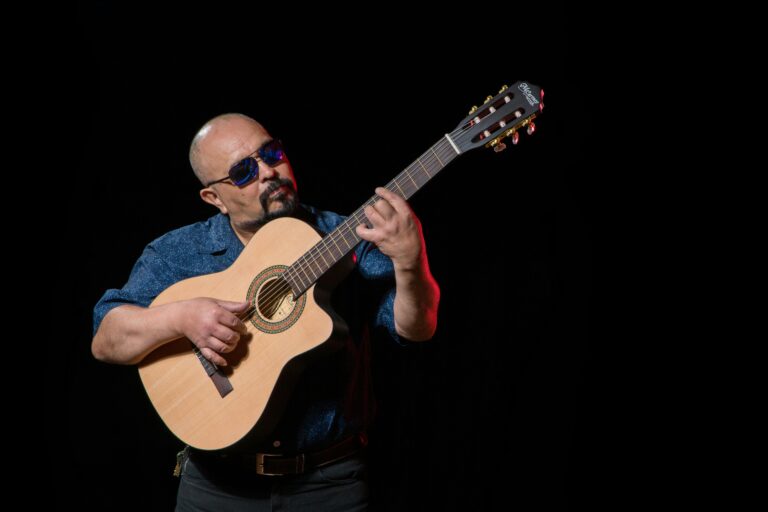
Flamenco Cante is the soulful singing that accompanies the lively dance and music in Flamenco. Imagine it as the emotional storyteller, using words and melodies to express deep feelings and experiences.
When you hear Flamenco Cante, pay attention to the passionate voice telling a tale of love, joy, sorrow, or even the challenges of life. The singer, known as a “cantaor” or “cantaora,” uses their voice to convey the essence of Flamenco, creating a powerful connection with the audience.
To appreciate Flamenco Cante fully, let yourself be carried away by the emotions in the singer’s voice. Unlike other forms of singing, Flamenco Cante is raw and unrestrained, allowing the artist to pour their heart into every note. It’s a direct and intense form of expression that adds a profound layer to the overall Flamenco experience.
Consider attending live performances or listening to recordings where Flamenco Cante takes center stage. Feel the emotions conveyed through the singing, and let it resonate with your own feelings. The beauty of Flamenco Cante lies in its ability to communicate universal emotions, making it a captivating and relatable art form.
What Is Flamenco Baile?
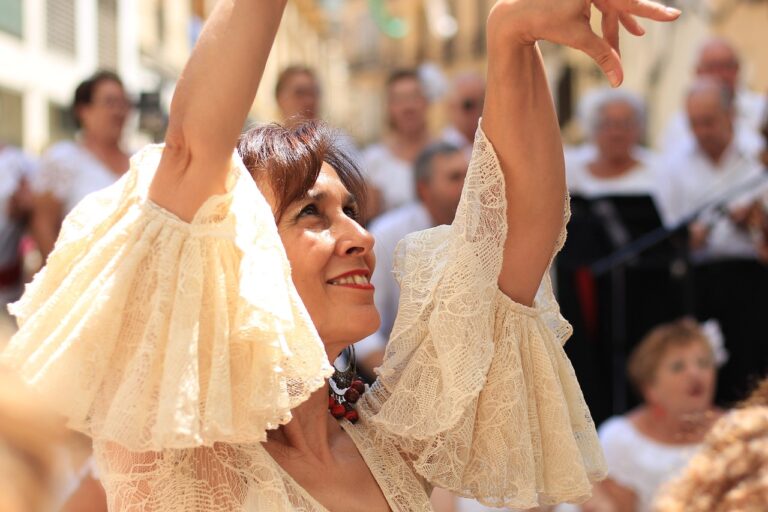
Flamenco Baile is the captivating dance that brings life to Flamenco music. Imagine it as a conversation between the dancer and the music, expressing emotions and stories through rhythmic movements.
When you witness Flamenco Baile, observe the dancer’s feet, hands, and body as they move in harmony with the music. Each step and gesture has a purpose, conveying a narrative that adds depth to the overall performance. The dancer, known as a “bailaor” or “bailaora,” uses Flamenco Baile to create a visual poetry that complements the soulful melodies.
To fully appreciate Flamenco Baile, allow yourself to feel the energy and emotion conveyed through the dancer’s movements. Unlike other dance forms, Flamenco Baile is intense and passionate, with each step telling a part of the story. Whether slow and dramatic or fast and lively, the dance is an essential element that completes the Flamenco experience.
Consider attending live Flamenco performances to witness the power of Flamenco Baile firsthand. Allow the rhythm to guide your own movements, and let the dance speak to your emotions. The beauty of Flamenco Baile lies in its ability to transport you into a world of expression and storytelling through movement.
What Is Flamenco Duende?

Flamenco Duende is a magical and elusive quality in Flamenco that brings a deep, emotional connection to the performance. Think of it as the soulful spirit that makes Flamenco truly special.
When you experience Flamenco Duende, it’s like feeling a powerful and indescribable energy in the air. It’s the moment when the music, dance, and singing come together to create something beyond words. A shared emotion that touches both the performers and the audience.
To connect with Flamenco Duende, let yourself be fully present during a Flamenco performance. It’s not just about watching; it’s about feeling the intensity and passion in the air. The artists, driven by the Flamenco Duende, pour their hearts into the performance, creating a profound and authentic connection with those who are there to witness it.
What’s the Difference Between Classical and Flamenco Guitar?
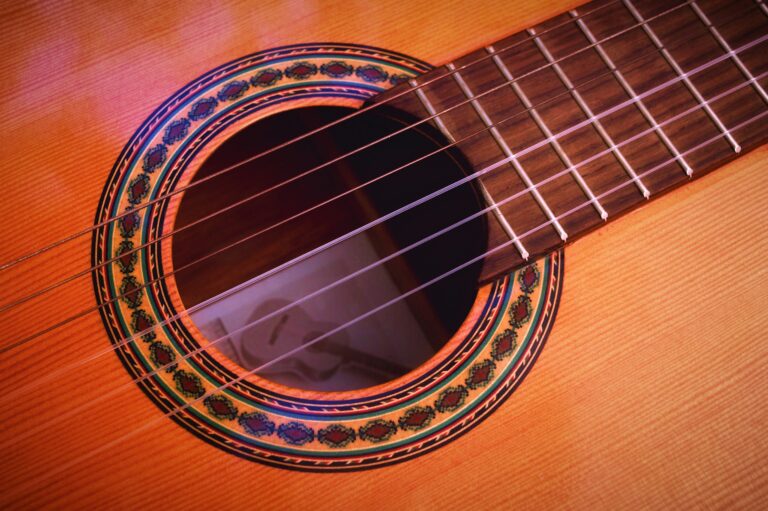
Classical and Flamenco guitar, despite sharing the same instrument, have distinct characteristics that set them apart.
Classical guitar is like a well-structured story. It follows written musical scores, emphasizing precision and adherence to the composed piece. The sound is often mellow and the playing style involves intricate fingerpicking techniques.
Flamenco guitar, on the other hand, is the spirited and improvisational cousin. It thrives on spontaneity, emotion, and bold strumming. The guitarist doesn’t just play the notes; they infuse the music with their personality, creating a dynamic and passionate performance.
One key difference lies in the approach to rhythm. Classical guitar tends to have a steady and measured rhythm, while Flamenco guitar embraces complex and lively rhythms, creating an energetic and vibrant atmosphere.
To navigate between the two styles, it’s essential to understand the nuances. In classical guitar, focus on mastering the written compositions and refining your fingerpicking techniques. In Flamenco, allow yourself the freedom to improvise, express emotions, and experiment with rhythmic patterns.
4 Famous Flamenco Guitarists in Spain
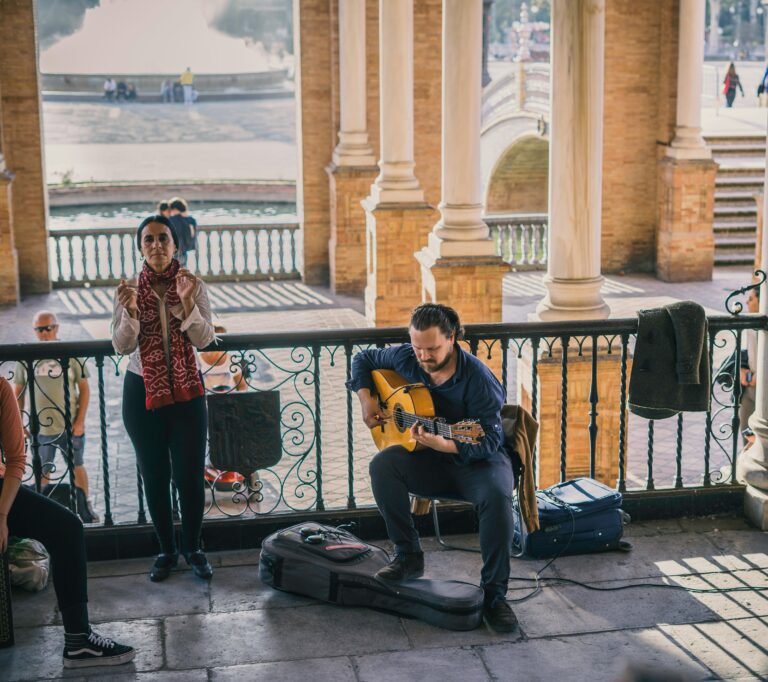
Imagine the world of Flamenco guitar, where skilled artists create enchanting melodies. Four notable figures have left an indelible mark on this musical landscape.
First, there’s Paco de Lucía, a legendary guitarist known for his innovation. His fingers danced on the strings, weaving intricate patterns that elevated Flamenco to new heights. Listening to his music offers a masterclass in both technique and emotion.
Next, meet Vicente Amigo, a contemporary Flamenco virtuoso. His guitar speaks a language of its own, blending traditional elements with modern flair. Listening to Amigo’s compositions reveals a fusion of passion and innovation.
Then, there’s Sabicas, a pioneer who brought Flamenco guitar to the global stage. His skillful playing introduced Flamenco to audiences far beyond its Spanish roots. Sabicas’ influence resonates in the hearts of guitar enthusiasts worldwide.
Lastly, dive into the rhythms of Tomatito, an artist recognized for his collaborations and genre-spanning creativity. His guitar work effortlessly transcends boundaries, making him a bridge between Flamenco tradition and modern musical expressions.
Flamenco Hotspots in Spain
Andalusia, the birthplace of flamenco
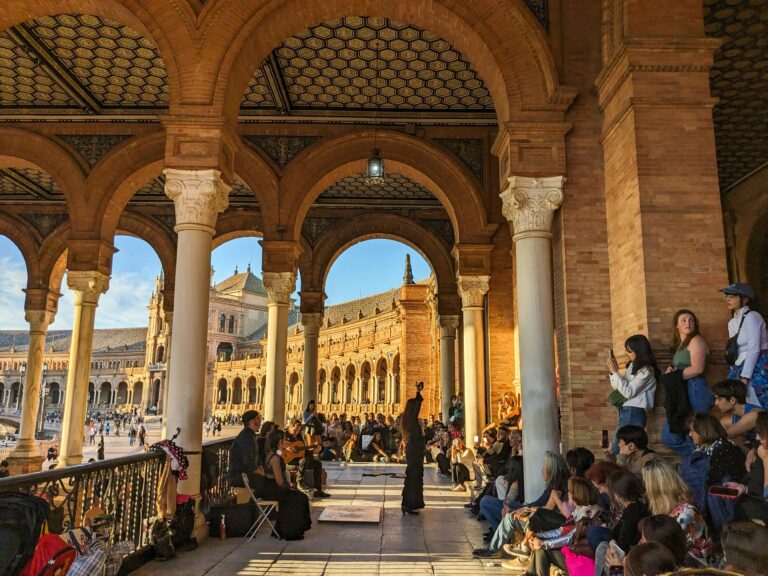
In the heart of Spain, in a region called Andalusia, flamenco was born. It’s a passionate and lively form of music and dance that has its roots in this sunny southern part of the country. If you’re a fan of flamenco or curious to experience it, Andalusia is the place to be.
Seville, the capital of Andalusia, is a hotbed for flamenco. Wander through the narrow streets of neighborhoods like Triana, and you might stumble upon an intimate tablao (flamenco venue) where locals showcase their incredible talent. Don’t be surprised if you find yourself clapping along to the rhythm and feeling the infectious energy of the performers.
Granada is another gem for flamenco enthusiasts. The historic Sacromonte neighborhood is known for its cave houses where flamenco shows take place. Imagine sitting in a cozy cave, surrounded by the echoing sounds of guitars and passionate singing. It’s an experience you won’t forget.
Córdoba, with its mesmerizing Mezquita, also has a thriving flamenco scene. Look for venues where you can witness the artistry up close. The combination of rhythmic footwork, soulful singing, and intricate guitar playing will leave you captivated.
As you travel through Andalusia, keep an eye out for impromptu flamenco performances in local bars or even on the streets. The spontaneity adds an extra layer of authenticity to the experience.
Jerez de la Frontera
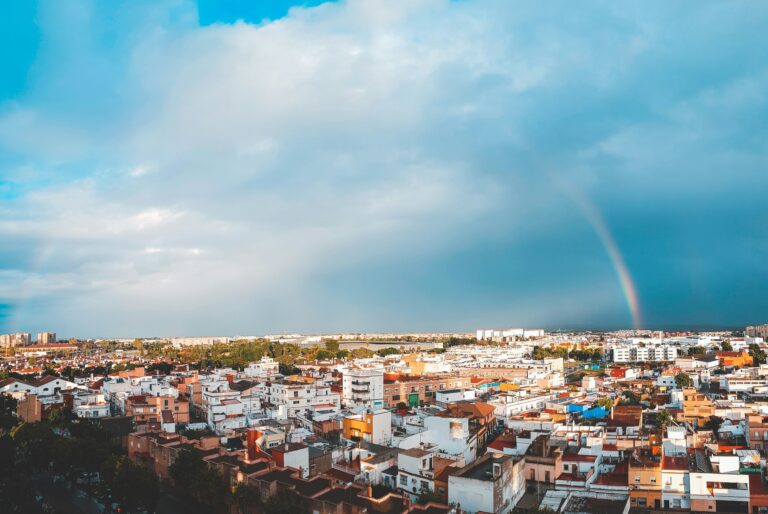
In the enchanting town of Jerez de la Frontera, located in southern Spain, you’ll discover a vibrant hub of flamenco culture. This charming place is a must-visit for anyone eager to experience the true essence of flamenco.
As you stroll through the streets of Jerez, you’ll feel the heartbeat of flamenco in the air. Locals here live and breathe this passionate art form. One of the best ways to immerse yourself is by attending a performance in a traditional flamenco tablao. These cozy venues showcase the incredible skills of flamenco dancers, musicians, and singers, providing an intimate setting for an unforgettable experience.
Jerez is renowned for its unique style of flamenco known as “bulerías.” The fast-paced footwork and spirited rhythm of bulerías are sure to leave you in awe. To witness this captivating dance, look for local venues or even inquire with the friendly locals for recommendations.
Murcia

In the sunny region of Murcia, Spain, the echoes of Andalusian flamenco resonate, creating a captivating atmosphere for enthusiasts. Murcia may not be as widely known as other flamenco hotspots, but it holds a rich legacy of this passionate art form.
Wandering through the streets of Murcia, you’ll discover hidden gems where flamenco comes alive. Locals carry the tradition forward, infusing their performances with the spirit and flair that define Andalusian flamenco. Unlike the grand venues of bigger cities, Murcia’s intimate settings offer a more personal connection to the art.
To fully experience the legacy of Andalusian flamenco in Murcia, seek out local tablaos or small theaters. These cozy spaces showcase the talents of flamenco artists, allowing you to feel the raw emotion and energy up close. It’s an opportunity to witness the rhythmic footwork, soulful singing, and intricate guitar playing that make flamenco so special.
Keep an ear out for the distinct Murcian flamenco style, which often incorporates influences from neighboring Andalusia. The fusion creates a unique blend that adds to the charm of the performances you’ll encounter.
